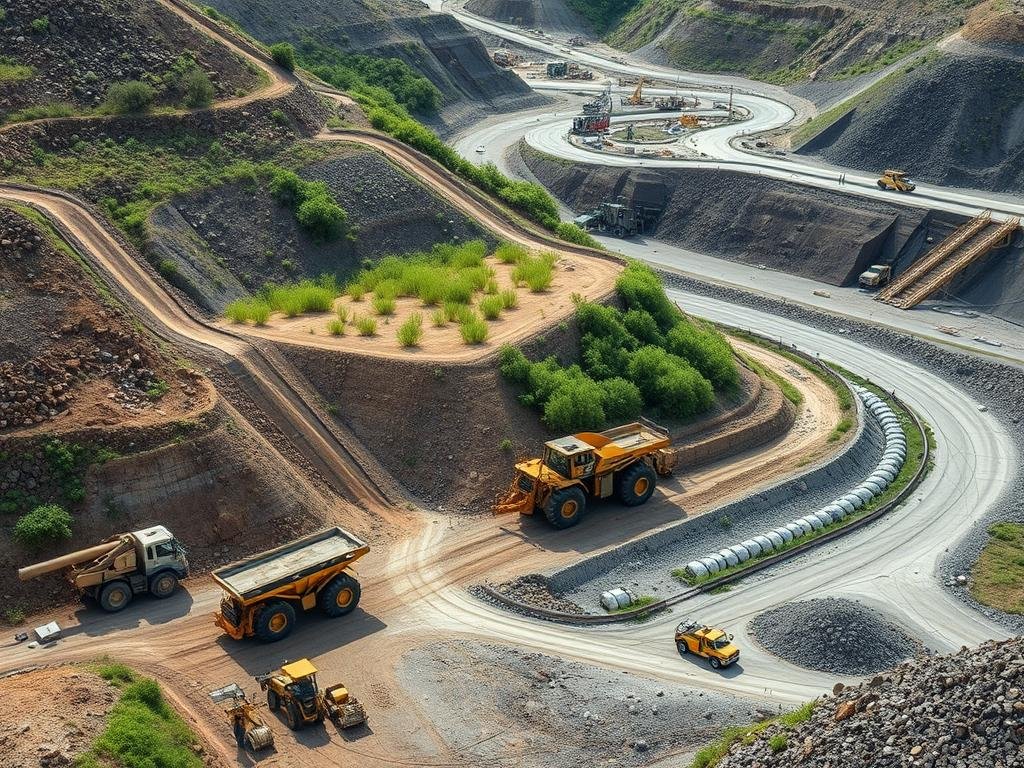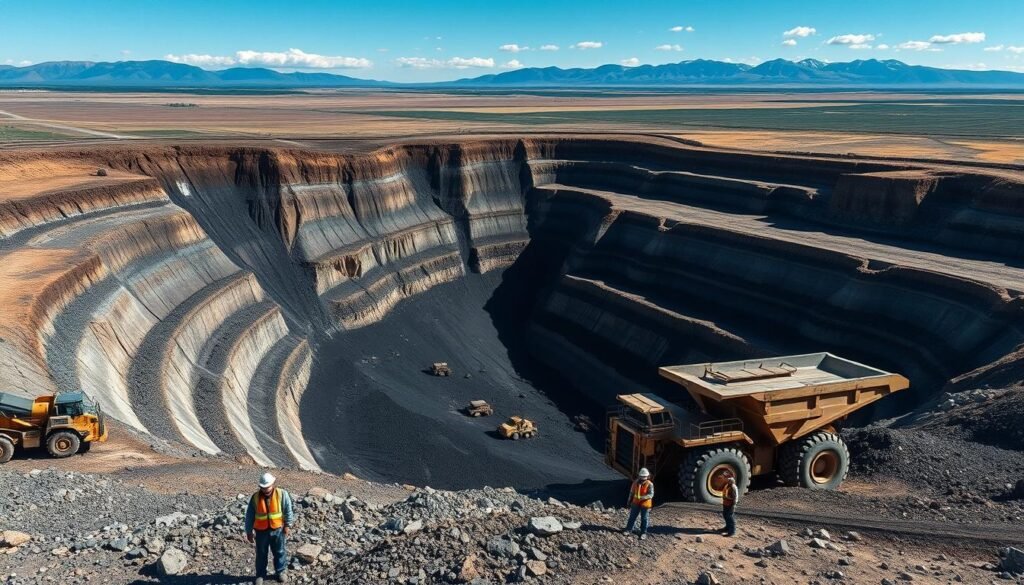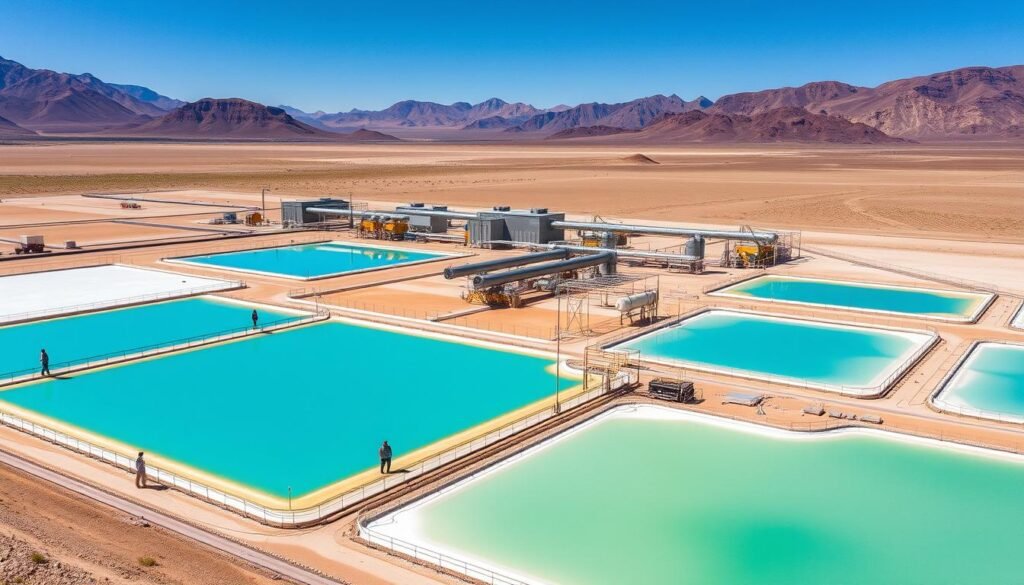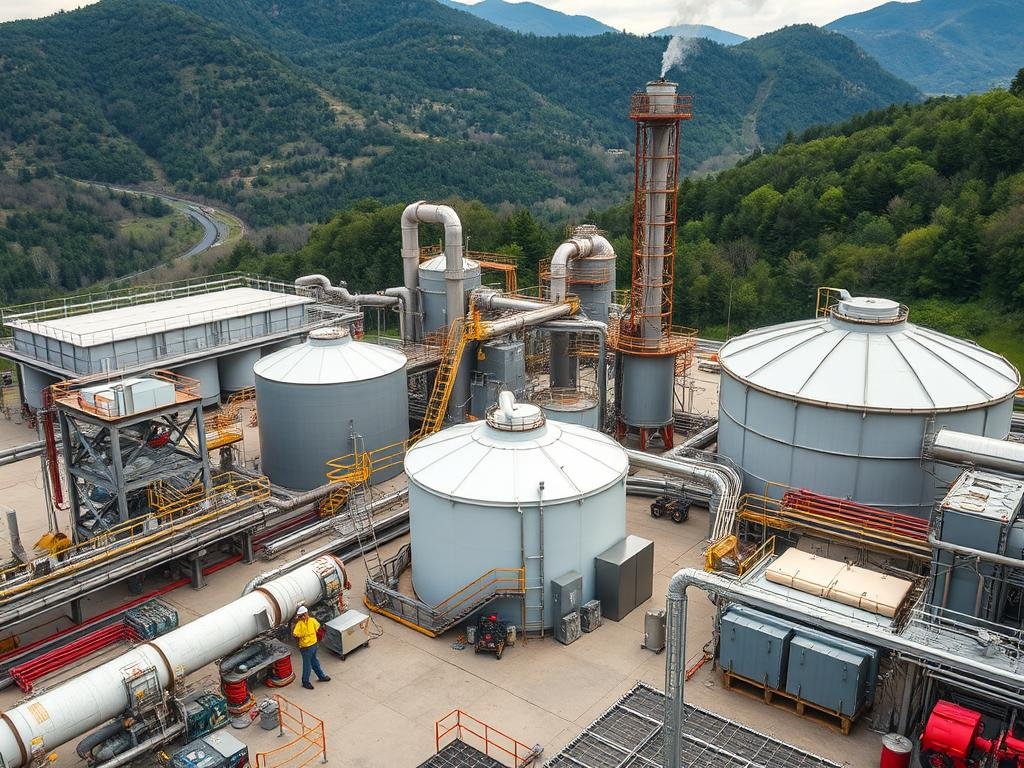President Donald Trump’s sweeping domestic policy package, dubbed the “big, beautiful bill,” represents one of the most significant shifts in environmental and economic policy in decades. At its core lies a fundamental tension: how to balance America’s growing need for mineral resources with longstanding environmental protections. This legislation, which recently passed through Congress, fundamentally reshapes the relationship between resource extraction industries and environmental regulations that have been in place for generations.
The bill’s provisions on environmental regulation and mineral extraction have sparked intense debate among lawmakers, industry leaders, environmental advocates, and communities across America. With billions of dollars and the health of ecosystems at stake, understanding the nuances of this legislation has never been more important for citizens, businesses, and policymakers alike.
Historical Context: Environmental Regulation in America
The modern era of environmental regulation in the United States began in 1970 with the establishment of the Environmental Protection Agency under President Nixon. This period saw the passage of landmark legislation including the Clean Air Act, Clean Water Act, and Endangered Species Act, creating a comprehensive framework for environmental protection that has shaped American industry for over five decades.
Subsequent administrations have taken varying approaches to this regulatory framework. The Reagan administration in the 1980s pursued significant deregulation, arguing that environmental rules hampered economic growth. The Bush tax cuts of the early 2000s prioritized economic stimulus over environmental concerns, while the Obama administration’s Affordable Care Act included provisions for environmental health and the Inflation Reduction Act under Biden created substantial incentives for clean energy.
Trump’s Approach to Environmental Policy
Trump’s first term saw a systematic effort to roll back environmental regulations, with his administration eliminating or weakening over 100 rules governing air pollution, water protection, and wildlife conservation. The “big, beautiful bill” continues this approach but with a more comprehensive legislative framework rather than executive actions.
Senator John Barrasso (R-Wyoming), chairman of the Senate Energy Committee, defended this approach: “For too long, excessive regulations have strangled American energy production and mineral extraction. This bill finally restores balance to a system that has prioritized red tape over economic growth and energy independence.”
Key Provisions of Trump’s Big Beautiful Bill
Environmental Deregulation Measures
The bill includes several significant changes to environmental regulatory frameworks. It reduces the scope of environmental impact assessments required for new mining and drilling operations, shortening the review period from an average of 4.5 years to just 1 year. The legislation also limits the EPA’s authority to reject permits based on downstream water quality impacts and narrows the definition of “critical habitat” under the Endangered Species Act.
Perhaps most significantly, the bill creates a new “strategic resource” designation that allows expedited approval for projects deemed essential to national security or economic interests, bypassing several traditional environmental review requirements. This provision applies primarily to rare earth minerals, uranium, and certain fossil fuel resources.
Mineral Extraction Incentives
On the extraction side, the legislation provides substantial tax incentives for domestic mining operations. Companies can now deduct up to 200% of exploration costs for critical minerals and receive a 10-year tax holiday for new mining operations in designated “resource development zones.” The bill allocates $46.5 billion for infrastructure development in mining regions, including roads, power lines, and water systems.
The package also includes $25 billion for research into advanced extraction technologies that promise to reduce environmental impacts while increasing yield. Treasury Secretary Scott Bessent called these provisions “essential investments in America’s resource independence” during a recent press conference.
| Provision Type | Key Elements | Estimated Impact |
| Permitting Reform | One-year review limit, reduced public comment period | 60% faster project approvals |
| Tax Incentives | 200% exploration deduction, 10-year tax holiday | $150 billion in new mining investment |
| Infrastructure Funding | $46.5 billion for mining region development | Support for 200+ new extraction projects |
| Research Grants | $25 billion for advanced extraction technologies | 30% reduction in environmental footprint |
| Regulatory Rollbacks | Narrowed definitions, limited EPA authority | Reduced compliance costs by 40% |
Stakeholder Perspectives on the Bill
Republican Support
Republican lawmakers have broadly celebrated the bill as a triumph for American energy independence and job creation. Senate Majority Leader emphasized that “this legislation puts America first by ensuring we have access to the critical minerals needed for our economic and national security without depending on foreign nations.”
Senator Lisa Murkowski (R-Alaska), a key architect of the mineral provisions, stated: “For too long, we’ve been dependent on China and other nations for minerals that we have in abundance right here at home. This bill removes the artificial barriers that have prevented us from developing these resources while still maintaining reasonable environmental safeguards.”
Democratic Opposition
Democrats have largely opposed the bill, characterizing it as an unprecedented rollback of environmental protections. Representative Alexandria Ocasio-Cortez (D-NY) called it “a giveaway to polluters that sacrifices our clean air and water for corporate profits,” while Senator Bernie Sanders (I-VT) described it as “environmental vandalism dressed up as economic policy.”
House Minority Leader pointed to specific concerns about water quality impacts: “By gutting the Clean Water Act’s protections, this bill threatens drinking water for millions of Americans, particularly in rural and tribal communities near extraction sites.”
Industry Reaction
The American Mining Association has enthusiastically endorsed the legislation, with CEO Michael Johnson stating that it “represents a once-in-a-generation opportunity to revitalize American mining and create tens of thousands of good-paying jobs.” The National Association of Manufacturers similarly praised the bill for “removing regulatory obstacles that have hampered domestic production.”
However, some industry leaders have expressed concerns about potential backlash. The CEO of Rio Tinto’s North American operations noted in a recent earnings call that “while regulatory relief is welcome, we must ensure that our operations maintain the highest environmental standards to retain public trust and avoid future regulatory whiplash.”
Environmental Groups
Environmental organizations have universally condemned the legislation. The Sierra Club called it “the most significant rollback of environmental protections in American history,” while the Natural Resources Defense Council warned that it “opens the door to widespread pollution and habitat destruction with minimal oversight.”
Dr. Jane Goodall, renowned conservationist, expressed particular concern about the bill’s impact on wildlife: “By weakening habitat protections and accelerating development without proper assessment, we risk losing species and ecosystems that can never be replaced.”
Economic Impacts and Job Creation
The Congressional Budget Office estimates that the bill’s mineral extraction provisions will create approximately 280,000 direct jobs in mining and related industries over the next decade, with an additional 420,000 indirect jobs in supporting sectors. These projections have been a central selling point for the legislation’s supporters.
Economist Larry Summers, who served as Treasury Secretary under President Clinton, offered a mixed assessment: “While the job creation potential is real, particularly in rural communities that have struggled economically, the bill’s fiscal impact is concerning. The tax incentives alone will cost approximately $150 billion over ten years, contributing significantly to the deficit.”
Regional Economic Benefits
Certain regions stand to benefit disproportionately from the legislation. Wyoming’s coal industry, which has faced declining demand, could see renewed investment under the bill’s provisions. Nevada’s lithium deposits, essential for electric vehicle batteries, are likely to see accelerated development, potentially transforming rural communities in the state.
Governor Mark Gordon of Wyoming praised the bill for “recognizing the essential role that states like Wyoming play in America’s energy security,” while Nevada Senator Catherine Cortez Masto, though opposing the overall package, acknowledged that “responsible lithium development could create substantial economic opportunities for Nevada.”
Economic Benefits
- Creation of 280,000 direct mining jobs
- $150 billion in new mining investment
- Reduced dependence on foreign mineral imports
- Infrastructure improvements in rural communities
- Increased tax revenue for resource-rich states
Economic Concerns
- $3.3 trillion addition to national debt
- Potential long-term cleanup costs
- Tourism impacts in scenic areas near mines
- Property value declines near extraction sites
- Boom-bust cycle risks for mining communities
Environmental Concerns and Mitigation Strategies
Environmental scientists have raised significant concerns about the bill’s potential ecological impacts. Dr. Emily Carter, Professor of Environmental Engineering at MIT, notes that “by shortening the environmental review process and limiting the scope of impact assessments, we risk missing cumulative and long-term effects that could prove devastating to ecosystems and communities.”
Water quality represents a particular concern. The bill’s provisions limiting the EPA’s authority over permits could potentially allow mining operations to discharge higher levels of pollutants into waterways. A recent study by the U.S. Geological Survey found that 40% of headwater streams in mining regions already show elevated levels of heavy metals and other contaminants.
Industry Mitigation Commitments

Some industry leaders have committed to maintaining high environmental standards despite reduced regulatory requirements. Freeport-McMoRan, one of America’s largest mining companies, has pledged to continue following “best-in-class environmental practices regardless of regulatory changes.” The company recently announced a $500 million investment in water treatment technologies for its operations.
The bill does include $25 billion for research into more environmentally friendly extraction technologies. Dr. Thomas Graedel of Yale University, an expert in industrial ecology, sees potential in these provisions: “If properly directed, this research funding could accelerate the development of mining techniques that significantly reduce environmental footprints while maintaining economic viability.”
State and Industry Case Studies
Wyoming Coal Industry

Wyoming’s coal industry, which has faced declining demand due to competition from natural gas and renewable energy, stands to benefit significantly from the bill’s provisions. The legislation removes several regulatory hurdles for coal mining on federal lands and provides tax incentives for “clean coal” technologies.
Campbell County Commissioner Rusty Bell explained the local impact: “Coal has been the backbone of our economy for generations. This bill gives our mines a fighting chance to continue providing good jobs while meeting America’s energy needs.” The county estimates that the legislation could preserve up to 5,000 coal mining jobs that might otherwise be lost over the next decade.
Nevada Lithium Development

Nevada contains some of America’s largest lithium deposits, a critical mineral for electric vehicle batteries and renewable energy storage. Under the bill’s expedited permitting provisions, several major lithium projects that have been stalled in regulatory review could move forward rapidly.
Lithium Americas Corporation, which has been seeking approval for its Thacker Pass project for over five years, expects to begin construction within months of the bill’s implementation. CEO Jon Evans stated that the project “will create over 1,000 construction jobs and 300 permanent positions while producing enough lithium for approximately 800,000 electric vehicles annually.”
However, the project has faced opposition from local tribal communities. The Fort McDermitt Paiute and Shoshone Tribe has expressed concern about the project’s impact on cultural sites and water resources. Tribal Chairman Arlo Crutcher noted that “the bill’s streamlined permitting process limits our ability to ensure our sacred sites and water are protected.”
Appalachian Rare Earth Elements

Recent geological surveys have identified significant deposits of rare earth elements in the Appalachian region, particularly in Kentucky and West Virginia. These elements are essential for electronics, renewable energy technologies, and defense applications, but the U.S. currently imports over 80% of its supply from China.
The bill designates these deposits as “strategic resources,” allowing expedited development. Senator Mitch McConnell highlighted the potential impact: “This legislation could transform communities that have struggled since the decline of coal by creating a new mineral economy based on these critical resources.”
International Implications and Trade Considerations
The legislation has significant implications for global mineral markets and trade relationships. By incentivizing domestic production, the bill aims to reduce America’s dependence on mineral imports, particularly from China, which currently dominates the supply of rare earth elements and other critical minerals.
Former Secretary of State Mike Pompeo praised this aspect of the bill: “By reducing our reliance on foreign minerals, particularly from adversarial nations, we strengthen our national security and gain leverage in international negotiations.” The legislation includes provisions for expedited export permits for minerals to allied nations, potentially strengthening economic ties with partners like Japan, South Korea, and European Union members.
However, international trade experts have raised concerns about potential World Trade Organization violations. Dr. Jennifer Hillman of Georgetown Law, a former WTO Appellate Body member, noted that “some of the bill’s domestic content requirements and preferential treatment provisions could be challenged as discriminatory under WTO rules.”
Chinese Response
China has already signaled concern about the legislation’s potential impact on its mineral export market. A spokesperson for China’s Ministry of Commerce stated that “measures that distort international markets and discriminate against foreign suppliers will ultimately harm global mineral supply chains and economic cooperation.”
Some analysts predict that China might respond by restricting exports of processed minerals or accelerating its own investments in mineral-rich nations in Africa and South America to maintain market dominance. Dr. Scott Kennedy of the Center for Strategic and International Studies warned that “this could trigger a global race for mineral resources that might ultimately raise costs for everyone.”
Future Scenarios and Long-term Impacts
Scenario 1: Mineral Renaissance
In this optimistic scenario, the bill’s provisions successfully stimulate a dramatic increase in domestic mineral production while new technologies mitigate environmental impacts. America becomes a net exporter of several critical minerals by 2030, creating sustained economic growth in resource-rich regions.
The research funding leads to breakthroughs in extraction methods that reduce water usage by 60% and virtually eliminate acid mine drainage. These technologies become industry standards, exported globally as best practices.
Scenario 2: Environmental Backlash
In this scenario, accelerated extraction without adequate safeguards leads to several high-profile environmental disasters by 2027. Public outcry results in a political shift and the reinstatement of stricter regulations, creating regulatory whiplash that disrupts industry planning.
Legal challenges delay many projects, and some companies abandon investments due to uncertainty and reputational concerns. The resulting boom-bust cycle leaves mining communities worse off than before.
Long-term Regulatory Outlook
Environmental law experts suggest that the dramatic regulatory changes in the bill may not prove durable over the long term. Professor Richard Lazarus of Harvard Law School observed that “major deregulatory initiatives often face significant legal challenges and can be reversed by subsequent administrations or congressional action.”
Industry leaders recognize this risk. In a recent investor call, the CEO of Newmont Mining acknowledged that “while the current regulatory environment is favorable, we’re planning our projects with the assumption that some environmental requirements may be reinstated in the future. Building sustainability into our operations isn’t just good citizenship—it’s good business.”
Frequently Asked Questions
How does Trump’s Big Beautiful Bill differ from Biden’s policies on mineral extraction?
The Biden administration prioritized environmental reviews and tribal consultation while offering targeted incentives for clean energy minerals through the Inflation Reduction Act. Trump’s bill takes a dramatically different approach by broadly reducing regulatory requirements, shortening review timelines, and providing more extensive tax incentives across all mineral categories, including fossil fuels.
Which states benefit most from the mineral extraction provisions?
States with significant mineral deposits stand to benefit most, particularly Wyoming (coal, uranium), Nevada (lithium, gold), Arizona (copper), West Virginia and Kentucky (rare earth elements), and Alaska (various minerals). The bill’s infrastructure funding is also targeted primarily toward these resource-rich states.
Will the bill actually reduce dependence on foreign minerals?
Experts project mixed results. For some minerals like lithium and copper, domestic production could increase significantly, reducing import dependence. However, for highly processed rare earth elements, the U.S. still lacks sufficient processing capacity, meaning raw materials might be extracted domestically but still sent overseas for processing before returning as finished products.
How might the bill affect renewable energy development?
The bill presents a complex picture for renewables. It eliminates many tax incentives for wind and solar projects from the Inflation Reduction Act, potentially slowing deployment. However, it could accelerate production of minerals essential for renewable technologies like lithium, cobalt, and rare earths, potentially lowering component costs in the long run.
What legal challenges might the bill face?
Environmental organizations are likely to challenge several provisions, particularly those limiting environmental impact assessments and redefining protected habitats. Tribal nations may file suits related to consultation requirements and cultural resource protections. International challenges could emerge through the WTO regarding trade-related provisions.
Conclusion: Finding Balance in Resource Policy
Trump’s “big, beautiful bill” represents one of the most significant shifts in American resource and environmental policy in decades. Its provisions dramatically reshape the balance between mineral extraction and environmental protection, with far-reaching implications for the economy, ecosystems, and communities across the nation.
The ultimate impact of this legislation will depend not just on its provisions, but on how industry, regulators, communities, and future administrations respond to the new framework. The tension between resource development and environmental protection remains a fundamental challenge that will continue to shape American policy for generations to come.
As former Interior Secretary Bruce Babbitt once observed, “The history of the American West is a story of finding balance between using our resources and preserving them.” Trump’s bill represents a significant recalibration of that balance, one whose full consequences will only become clear in the years ahead.
Stay Informed on Environmental and Resource Policy
Get expert analysis of ongoing developments in environmental regulation and resource policy delivered to your inbox. Our policy experts track the implementation of Trump’s Big Beautiful Bill and its impacts across industries and ecosystems.
